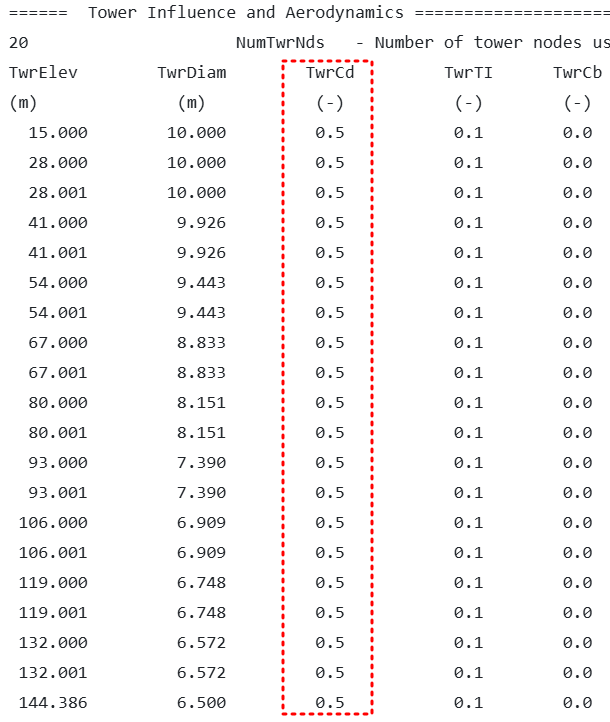Hello Forum Members,
I’m currently conducting numerical simulations using the 15MW Reference Wind Turbine (RWT), and I’ve encountered a question I hope to get your insights on.
Specifically, I am applying the 15MW RWT to a fixed-bottom offshore wind structure, and would like to clarify the appropriate aerodynamic drag coefficient for the tower.
As part of my parked condition simulations under a wind speed of 46.8 m/s, I tested two different aerodynamic drag coefficients for the tower: 1.0 and 0.5.
I observed that the maximum loads (Fx, Fy, Fz) and moments (Mx, My, Mz) at the tower base differed by approximately 1.5 times, depending on the coefficient used.
To clarify this, I referred to the DNV guidelines, which recommend using a drag coefficient of 1.0 for cylindrical structures.
However, when reviewing the OpenFAST 15MW IEA RWT model, I noticed that the aerodynamic drag coefficient applied to the tower is 0.5, as shown in the input files (AeroDyn15.dat).
I would like to ask:
- Is there a specific reason or reference behind using 0.5 in the 15MW RWT OpenFAST model?
- What drag coefficient values do other users typically apply for tower aerodynamic loads in parked conditions?
Any insights or references would be greatly appreciated.
Thank you!
Jisu Lim.
